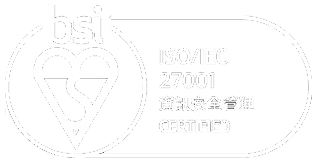Article I: Goods not suitable for delivery
1.Items not properly packed for protection with reference to the nature and weight of the items.
2.The items are too long, too heavy, too big that could not be fitted into our truck.
3.Items in nude packing, fragile and easily leaks.
4.Motorcycles and bicycles (not packed in box).
5.Liquefied substances packed in bottles or cans, not firmly packed and cannot stand shaking and easily leaks.
6.Too rushed for delivery that the routine shipment of goods cannot perform the delivery.
7.Letter, securities, cash, jewelry, antiques, artworks, precious metals, and other valuable items.
8.Live animals, animal bodies (except for food materials), vaccines, blood, test specimens and frozen drugs.
9.Popsicle, ice cream, cream cake, breast milk.
10.Easily rotten vegetables and pastry that could last for less than 3 days.
11.Counterfeit goods, prohibited goods, hazardous materials (highly corrosive, explosive substances and toxic chemicals), materials which are hazardous to /will jeopardize human health or other items in the same shipment for delivery.
12.Any other goods that the carrier deems cannot be accepted for delivery.
Article II: The Company disclaims any liabilities for to damage or joint and several liabilities of the consignor
1.Damage to the “goods not suitable for delivery” as stated in Article I.
2.In the event of damage to other consignors caused by the “goods not suitable for delivery”, the consignor shall assume joint and several liabilities.
3.Damage caused by natural disasters or force majeure.
4.Fire, flood or other disasters not because of the fault of the Company.
5.Malfunction, corrosion rusting, explosion and fire caused by the properties of the goods.
6.Damage caused by social movement, strikes or criminal offenses.
7.Damage caused by the sealing, forfeiture, unsealing and no transportation under law or executive power.
8.Defiance of applicable laws or general custom in processing.
9.Mistakes in the information on shipment
※「Damage」 refers to destruction 、 missing.
Article III: Surcharge for freight and declaration of value
1.Valuable items like watches, mobile phones, computers or precision instruments.
2.Goods which are too long, too heavy or oversized that a surcharge is applicable and shall be determined by the business office and the consignor.
3.Goods for delivery to rural areas and where the shipment process is complicated.
4.Value shall be declared on value insured goods (fill in the item name and amount on the waybill) and an additional 1% of the declared value as service charge. If the declaration of value is accepted and the service charge has been received, the maximum compensation for each piece of goods is NT$50,000. If the value exceeds the aforementioned amount, the goods shall be shipped in batches.
Article IV: Indemnity
1.The Company disclaims any liabilities for compensation of any other interest or loss of interest beyond the subject matter of delivery.
2.In the event of an accident, the upper limit of compensation will be up to NT$3,000 for items without a declared value.
Article V: The following attention is advised for ensuring the safety of goods and efficiency of delivery
1.Use materials for proper packing of the goods (such as bubble wrap/bag, foam wrap, old newspapers, styrofoam, or sponge) for good protection. The following means of packing are recommended.。
2.Pack glass and ceramic pieces separately for proper protection, such as separate packing of the tea pot and tea pot lid.
3.Use the original packing for appliances and instruments. If the original packing is not available, use substitute materials or foam or old newspapers to fill in the packing to minimize the effect from shaking.
4.Use the original packing for computer systems and should not be sent for delivery in naked packing.
5.For vegetables and fruits, use old newspapers to fill the carton to prevent cracking of the fruits due to moving of the carton.
6.Put all small accessories, small objects and small products into a small carton box and filled with shock-absorbent materials to avoid damage due to the small size of the objects.
7.Use destructive courier bags for packing clothing and put a bubble wrap layer inside to avoid damage by scratching, and warp around by adhesive tape to avoid dropping off of the waybill adhered to the external packing.
8.The original packing box of the product should not be higher than the height of the exterior carton to avoid uneven surface on the top when sealing the carton. Use sealing tape to seal the carton and use a packing belt to warp around the carton, if necessary.
9.Try to make sure that the waybill is firmly attached to the parcel or the information of the sender and the addressee should be marked on the carton box itself.
10.If a used carton is being re-used, wipe out the information of the previous sender and the addressee to avoid confusing the operations staff and so that the parcel could be delivered efficiently and timely.
11.The details of the sender and the addressee (company names), address, and telephone should be clearly specified. 。




